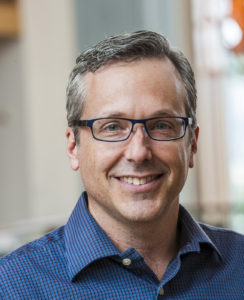
Steven A. Cummer
Professor of Electrical and Computer Engineering Duke University
Friday, Oct. 29th at 3pm
3550 MEK
ABSTRACT: The field of metamaterials emerged from efforts to use engineered structures, rather than intrinsic material properties, to control electromagnetic waves, including light. That concept has since branched into almost every area touched by wave and transport phenomena. One of the earliest offshoots was the field of acoustic metamaterials, which offers the possibility of manipulating and controlling acoustic and elastic waves in ways that are challenging or impossible with conventional materials. These modes of control span a wide range of phenomena, including cloaking, optimal absorption, and time-varying material properties. The possibilities are exciting, but many challenges remain in converting laboratory experiments into practically useful devices. In this presentation, I will describe some examples of metamaterial designs that yield unusual acoustic reflection, transmission, and propagation properties, beginning with our early work on acoustic cloaking. I will then pivot to some of our more recent work, including perfect metasurfaces that can fully control transmission and reflection amplitude and phase to deliver unusual wave behavior and properties, and new approaches for implementing ultrasonic acoustic tweezers for small particle trapping and transport.
BIO: Steven A. Cummer is currently the William H. Younger Distinguished Professor of Electrical and Computer Engineering at Duke University. He received his Ph.D. in Electrical Engineering from Stanford University in 1997 and spent two years at NASA Goddard Space Flight Center as a National Research Council postdoctoral research associate before joining Duke. He has written or coauthored more than 270 papers in refereed journals, and he is a Fellow of both the IEEE and the American Geophysical Union. He is a Clarivate Highly Cited Researcher, and he received a Presidential Early Career Award for Scientists and Engineers (PECASE) in 2001. He and his research group led some of the earliest work on acoustic and electromagnetic metamaterials and potential applications, including transformation acoustics and cloaking. His current research interests span a variety of theoretical and experimental topics in engineered materials and metamaterials for controlling acoustic and electromagnetic wave propagation, and also in geophysical remote sensing with a focus on lightning and atmospheric electricity.